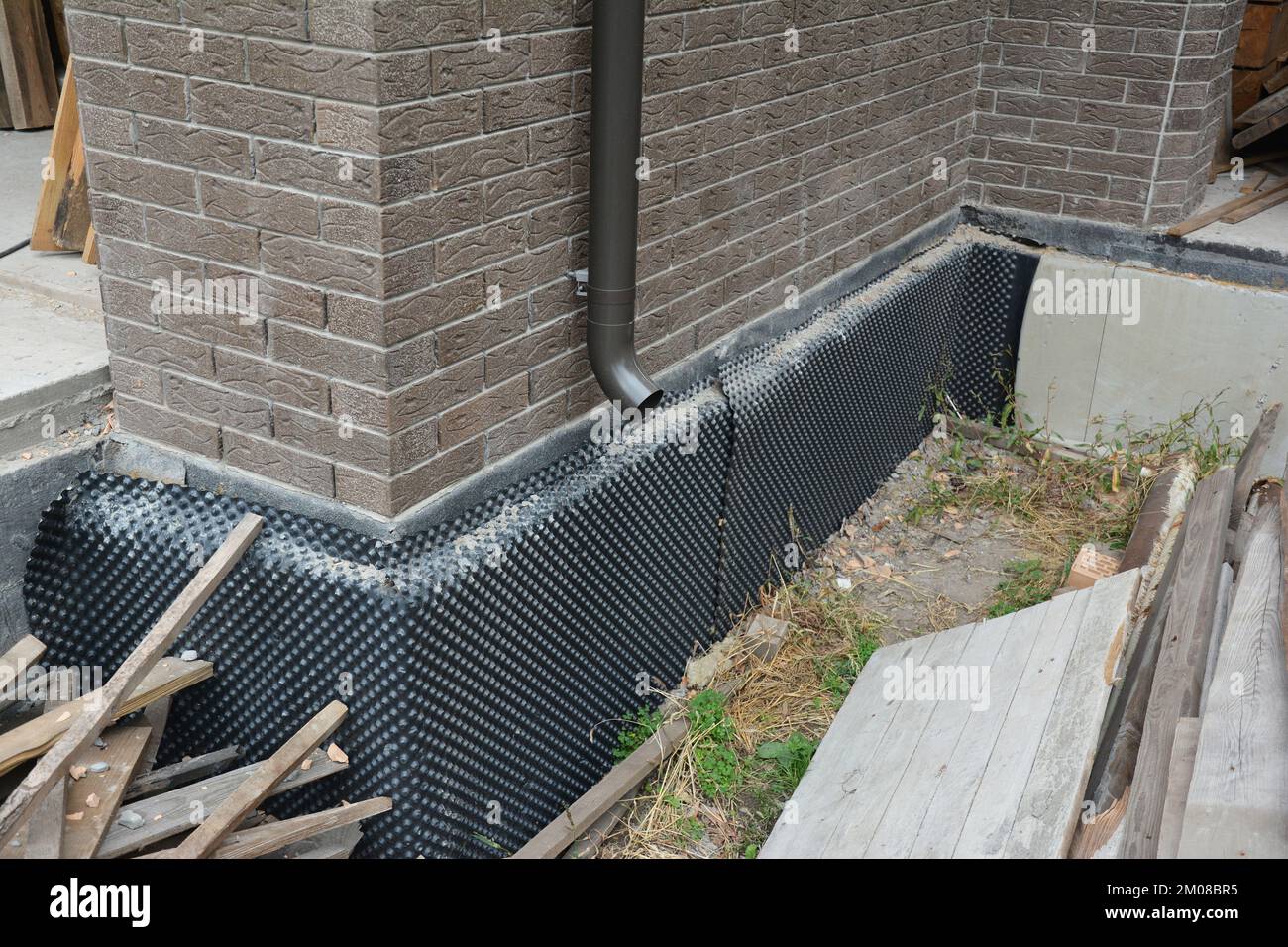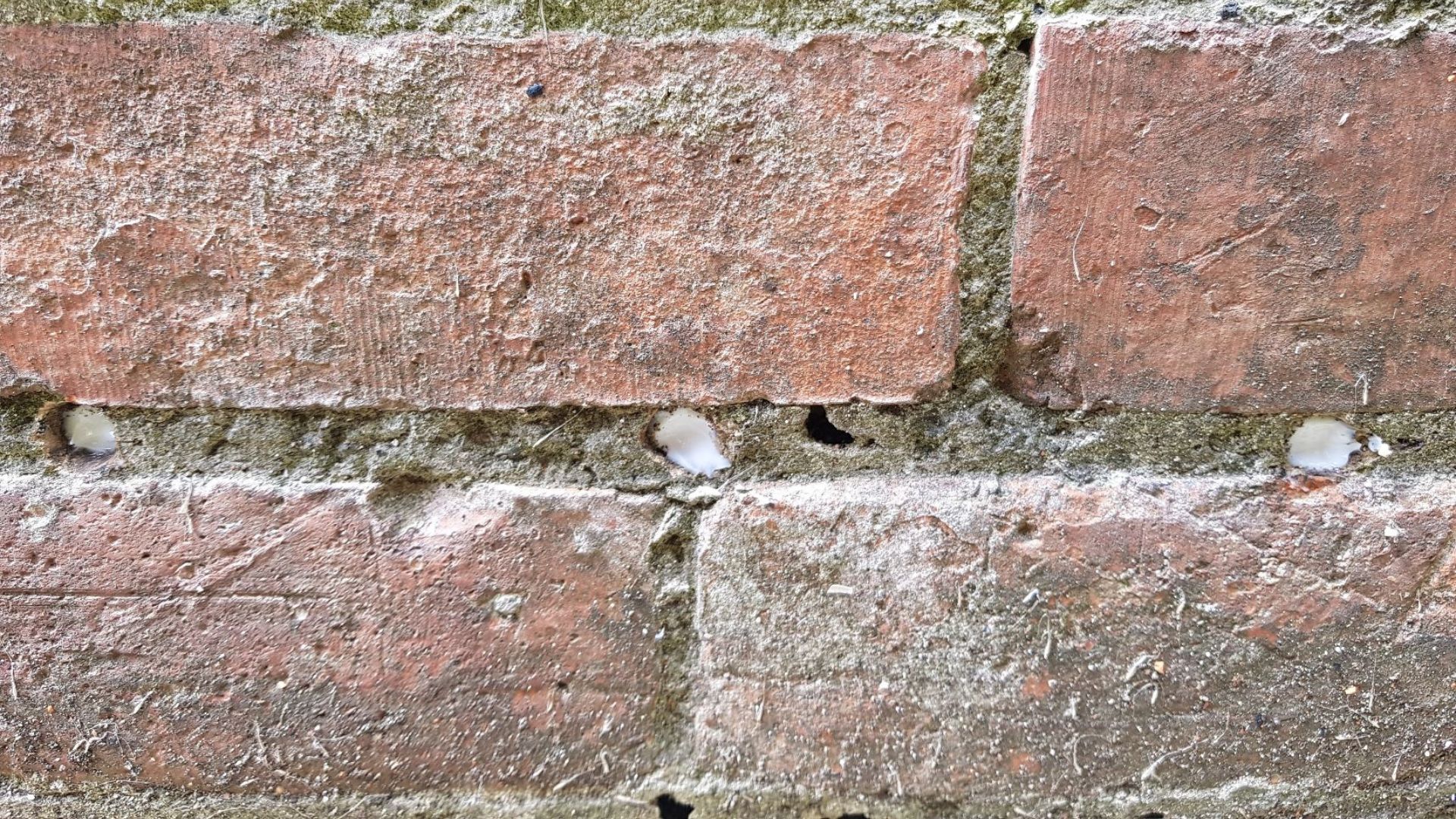Could your home be at risk? Use this guide from damp specialist newcastle to find out
Could your home be at risk? Use this guide from damp specialist newcastle to find out
Blog Article
Discovering the Numerous Techniques and Solutions for Effective Damp Proofing
Moisture in structures presents significant difficulties to both architectural integrity and indoor air top quality. Various methods and options have emerged to combat this pervasive problem. From traditional damp-proof membrane layers to cutting-edge chemical treatments, each technique uses unique advantages. Comprehending these choices is necessary for effective dampness control. Picking the ideal remedy depends on specific building problems and requirements, motivating further expedition right into the most effective wet proofing techniques readily available.
Comprehending the Sources Of Dampness
Although moisture can emerge from various resources, understanding these reasons is important for effective remediation. Commonly, wetness originates from 3 primary sources: climbing moist, permeating wet, and condensation. Increasing wet takes place when groundwater travels upwards with permeable materials, such as block or stone, usually because of a lack of an effective barrier (damp specialist newcastle). Passing through wet is normally triggered by outside aspects, consisting of roofing leaks, malfunctioning seamless gutters, or damaged walls, permitting water to penetrate a property. Condensation, on the other hand, results from excess wetness airborne, often worsened by bad ventilation and temperature distinctions, resulting in water droplets developing on surface areas. Recognizing these underlying problems is crucial, as each kind of moisture calls for a customized technique for removal. Correct assessment assists in identifying the most reliable remedies, inevitably safeguarding the structural integrity of a structure and boosting interior air quality
Standard Damp-Proof Membranes

Chemical Damp-Proofing Solutions
Chemical damp-proofing services supply a cutting-edge method to stop dampness breach in buildings. These methods generally entail the application of fluid chemicals that pass through stonework and create a barrier versus rising wet. Typically utilized chemicals include silanes, siloxanes, and other water-repellent representatives that respond with surface materials to develop a hydrophobic layer.The application procedure usually needs exploration openings right into the walls, infusing the chemical remedy, and allowing it to heal. This technique is especially beneficial for older structures where typical damp-proof membranes may be impractical. Additionally, chemical damp-proofing can be less turbulent and more affordable than considerable remodelling projects.While effective, these options depend on correct application and environmental problems for peak efficiency. Normal upkeep and tracking are necessary to ensure the long life of the damp-proofing treatment. Generally, chemical damp-proofing represents a flexible option for safeguarding buildings versus moisture-related damage
Tooth Cavity Wall Building And Construction Strategies
Dental caries wall construction techniques supply numerous benefits, specifically in wetness control and power performance. By integrating an air void in between 2 layers of stonework, these wall surfaces efficiently alleviate water ingress while enhancing insulation. This combination not only shields structures from dampness however likewise adds to reduced energy intake.
Advantages of Tooth Cavity Walls
When taking into consideration effective moist proofing approaches, the advantages of tooth cavity wall surfaces stand apart plainly. Cavity wall surfaces contain two separate layers, creating an air space that successfully reduces dampness penetration. This layout lessens the threat of dampness, as the outer wall serves as an obstacle versus rain and water access. In addition, dental caries wall surfaces enhance thermal insulation, which adds to energy performance by reducing warmth loss. They additionally supply audio insulation, assisting to create a quieter interior setting. The air gap permits for air flow, which aids in moisture control and decreases the possibility of mold and mildew growth. These advantages not only enhance the total comfort of a building yet additionally add to its durability and structural honesty.
Moisture Control Techniques
Reliable moisture control methods are crucial in cavity wall surface construction to assure lasting defense against dampness. One key approach involves the consolidation of weep holes, which promote water drainage from the tooth cavity, protecting against accumulation. In addition, the usage of breathable membrane layers can assist manage wetness levels while enabling trapped vapor to leave. Appropriate positioning of insulation is likewise essential, as it ought to not obstruct water drainage paths. Additionally, guaranteeing that the outer leaves of the cavity wall surface are created with water-resistant products improves general durability. Regular maintenance checks are important to determine any clogs or damages early, protecting the framework's stability. Eventually, a mix of these techniques develops a robust protection against dampness intrusion in dental caries wall surfaces.
Insulation and Power Performance
Insulation plays an essential function in improving energy effectiveness within tooth cavity wall construction. By integrating insulating materials, these wall surfaces produce a thermal obstacle that reduces warmth loss and lowers energy consumption. Effective insulation not only helps preserve a steady indoor temperature yet additionally reduces the threat of wetness, as it avoids condensation within the wall tooth cavity. Numerous strategies, such as making use of stiff foam boards or mineral wool, can be employed to attain ideal insulation performance. Additionally, correct installment is important to ensure that gaps and voids are decreased, which can or else endanger energy performance. Ultimately, a well-insulated dental caries wall contributes substantially to general sustainability and reduces cooling and heating expenses for house owners.
Exterior Damp Proofing Techniques
Outside wet proofing approaches are essential for shielding structures from moisture infiltration. 2 effective techniques consist of the application of water-proof membrane layers and the installment of French drains. These solutions aid alleviate water build-up and protect the integrity of buildings.
Waterproof Membrane Application
While numerous techniques exist for protecting against wetness ingress, the application of water resistant membrane layers stays a very effective outside damp proofing method. These membrane layers are usually made from products such as polyethylene, rubber, or modified asphalt, offering a durable obstacle against water penetration. The setup procedure entails using website the membrane layer to the exterior surface areas of structures or wall surfaces, ensuring complete coverage to protect against leaks. Proper attachment and securing at joints are crucial to maximizing performance. Water resistant membranes can be applied in numerous forms, consisting of liquid coverings and sheet membranes, enabling adaptability based on the specific demands of the framework. This technique not only protects buildings from wetness but likewise boosts their longevity and architectural honesty.
French Drainpipe Installation
One reliable method for handling groundwater and stopping moisture buildup around a structure's structure is the installment of a French drainpipe. This water drainage system includes a trench loaded with crushed rock and a perforated pipe that reroutes surface water away from the foundation. Proper installment calls for careful planning, making certain that the drainpipe slopes far from the framework to promote excellent water circulation. In addition, the place of the drain is crucial; it needs to be placed in areas prone to pooling or excess wetness. Regular maintenance, including clearing particles from the gravel and making certain the pipe remains unobstructed, is important for long-term performance. Inevitably, a well-installed French drain can greatly minimize the risk of water-related problems in structures and basements.
Inside Waterproofing Approaches
Inside waterproofing strategies are vital for shielding a building's interior from moisture seepage and potential water damages. These techniques usually involve the application of customized materials and techniques designed to develop a dampness obstacle within the framework. One typical method is the usage of water resistant coatings or sealers on walls and floorings, which avoid moisture from permeating surfaces.Additionally, installing indoor drainage systems, such as sump pumps, can properly manage water build-up in basements and crawl spaces. Another technique involves making use of vapor barriers, which are set up to prevent moisture motion from the ground right into living spaces.Moreover, dealing with any type of splits or voids in wall surfaces or foundations with appropriate sealers assures a comprehensive protection versus water breach. By executing these interior waterproofing methods, residential or commercial property owners can significantly decrease the threat of mold growth, architectural damages, and other moisture-related problems. Correct execution of these methods is crucial for lasting security and structure integrity.
Regular Upkeep and Inspection Practices
Regular upkeep and evaluation practices are essential for assuring the long-term effectiveness of damp proofing options in any type of structure. Routine checks make it possible for homeowner to recognize very early indications of moisture breach, such as peeling paint, mold growth, and moldy odors. These signs can signal underlying concerns that require immediate attention.Inspections need to be carried out at the very least each year, concentrating on susceptible areas like basements, creep spaces, and outside walls. During these analyses, homeowner must take a look at sealers, water drainage systems, and air flow to verify they work correctly.Additionally, keeping downspouts and seamless gutters is essential, as stopped up systems can lead to water build-up near the structure. Applying a routine maintenance schedule, together with prompt repairs, can considerably prolong the life expectancy of damp proofing actions and secure the structural stability of the structure. Proactive measures eventually add to the total health and wellness and security of the living setting.
Frequently Asked Concerns
For How Long Does Damp Proofing Normally Last?
The duration of wet proofing effectiveness differs, generally lasting in between 20 to half a century. Factors such as application high quality, ecological conditions, and maintenance practices substantially influence the long life of the damp proofing therapy.

Can I Damp Proof My Home Myself?
The specific pondered the expediency of DIY damp proofing. With correct research study and the best materials, it is feasible. However, they likewise identified the significance of specialist guidance to assure long-lasting effectiveness and prevent future problems.
What Are the Indications of Inefficient Damp Proofing?
Indications of ineffective moist proofing include persistent mildewy odors, visible mold and mildew development, peeling paint, wet spots on wall surfaces, and wood decay - mould removal newcastle. Home owners must address these problems immediately to avoid further damages and health problems
Does Damp Proofing Affect Indoor Air High Quality?

Exactly How Much Does Expert Damp Proofing Price?
Expert damp proofing expenses differ substantially, usually ranging from $1,000 to $5,000 relying on the residential property's dimension, the level of the wet concern, and selected methods. Each scenario needs a tailored analysis for exact pricing. Generally, wetness stems from 3 main sources: increasing wet, permeating moist, and condensation. When thinking about effective damp proofing methods, the benefits of tooth cavity walls stand out prominently. Outside damp proofing methods are crucial for protecting frameworks from dampness seepage. While different techniques exist for preventing moisture ingress, the application of water resistant membrane layers remains a highly reliable external damp proofing method. Signs of inadequate damp proofing include persistent mildewy smells, noticeable mold development, peeling off paint, wet patches on wall surfaces, and wood degeneration.
Report this page